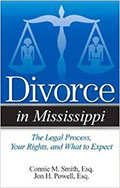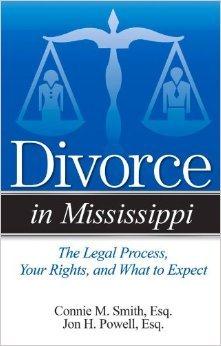REPORT FROM COUNSEL
FALL 2010 ISSUE
INNOCENT SPOUSE TAX RELIEF
For most married couples, filing federal income taxes jointly rather than separately results in a lower tax bill. However, this "all for one, one for all" approach can have a downside if questions arise about the accuracy of the return. The general rule is that both taxpayers will be responsible, individually as well as collectively, for any taxes, interest, and penalties owed, even if only one spouse was earning the income. It may be that in a couple's division of labor only one spouse is in fact responsible for understating income or erroneously claiming deductions, but, by law, each spouse can be made to answer to the IRS.
It is always good advice for anyone signing a tax return to do so only after carefully reviewing and understanding every line of it. But even such common-sense measures cannot always prevent mistakes and/or deception from happening. To avoid unfairness in such circumstances, the Tax Code has provisions designed to protect "the innocent spouse."
Under this general heading, there are three kinds of relief: innocent spouse relief, relief by separation of liability, and equitable relief. To request relief, a taxpayer must file the appropriate form with the IRS no later than two years after the IRS first tries to collect the tax. An attached statement must explain why the taxpayer believes he or she qualifies for relief. If the IRS rejects the claims for the first two types of relief, it will automatically determine whether equitable relief is warranted.
Conditions for Relief
An innocent spouse must meet the following conditions to qualify for relief:
(1) a joint return understated taxes because of erroneous claims by the requesting party's spouse, such as unreported or underreported income, or unjustified deductions or credits;
(2) when the return was signed, the innocent spouse did not know, or have reason to know, that there was an understatement of tax. If the spouse knew, or should have known, that there was an understatement but did not know by what amount, partial relief may be given; and
(3) in light of all of the surrounding circumstances, it would be unfair to hold the requesting party liable for the understatement of tax. Among the factors taken into account by the IRS are whether the taxpayer benefited from the erroneous return in the form of a higher standard of living and whether the joint filers later were divorced or separated.
A claim for innocent spouse relief was recently rejected by the Tax Court under circumstances that illustrate some of the factors that weigh against such relief. A husband underreported the income from a family business that, during the relevant tax year, was the couple's only source of income. His wife, who had retired from another job, helped run the business in a variety of ways, including answering the telephone, sending out mail, paying hired help, and sometimes working on some of the casino game nights that the business provided for customers.
Although both spouses thought of the business as primarily being the husband's, and only the husband had filed the joint tax return (although the wife had also signed it), the wife was too closely involved in running the business and had too much access to the records of the business to be accorded the status of an "innocent spouse."
Relief by Separation of Liability
Separation of liability means an allocation between the spouses of unpaid liabilities resulting from the understatement of taxes owed. Either of the following requirements must be met: The parties filing the joint return are no longer married or are legally separated, or the joint filers were not members of the same household at any time during the 12-month period before the relief is sought. This relief is not available if the spouses transfer assets between themselves to avoid taxes or as part of a fraudulent scheme. Another disqualifying factor is actual knowledge of the other spouse's erroneous items on a return that gave rise to the deficiency.
Equitable Relief
As a last resort, equitable relief may be available when there has not been any fraud and when, all things considered, it would be unfair to hold the spouse seeking relief liable for the understatement or underpayment of tax. A broad range of "fairness" factors may be considered by the IRS. There is no exhaustive list, but some examples include separation or divorce, economic hardship if relief is not granted, and the fact that the tax for which relief is sought is attributable to the other spouse.
Weighing against equitable relief would be factors such as knowledge of the items causing the understated tax, receiving a significant benefit from that understatement, or not making a good-faith effort to comply with federal income tax laws for the tax year in question.
WEBSITES AND WHERE TO SUE
After she became dissatisfied with the services of home remodeling contractors that she had obtained through an Internet referral website, Victoria sued the referral business for breach of contract, fraud, misrepresentation, and negligence.
The referral website involved a series of web pages. Victoria entered project information on the first page, clicked to the next page, entered more information, and so on. Each page was hyperlinked to the referral company's terms and conditions, one of which was a forum selection clause limited to Denver County, Colorado. Victoria never actually looked at the terms and conditions before she brought suit in her home state of Missouri. The dismissal of the suit for being in the wrong jurisdiction was upheld on appeal.
The process by which Victoria agreed to sue only in Colorado was not as clear-cut as when a customer shows assent by clicking to show acceptance of terms and conditions (a "clickwrap" agreement), but it still was sufficient to bind the website user. The referral business had not unreasonably hidden the terms and conditions. Victoria assented to the forum selection clause contained in the website "browsewrap" agreement, although assent did not require a "click," where the website placed an immediately visible notice of the existence of license terms on the site by stating "[b]y submitting you agree to the Terms of Use," and by placing a blue hyperlink next to the button that the user clicked.
There was also a second link to those terms that was visible on the same page without scrolling, and similar links were on every other website page. In short, the referral business was sufficiently up front about the forum selection clause, and it was not its fault that Victoria had not actually navigated on the website so as to read about that term.
The court acknowledged that the legal effect of online agreements may be an "emerging area of the law." Nonetheless, courts still apply traditional principles of contract law, which means focusing on whether the plaintiff had reasonable notice of, and manifested assent to, the agreement and all of its terms and conditions. Since notice and assent were both present in Victoria's case, she had to sue the referral business in Colorado or not at all.
BETTER(?) DISCLOSURE FOR MORTGAGE CONSUMERS
The federal Real Estate Settlement Procedures Act (RESPA) is a consumer protection law for homebuyers that is enforced by the Department of Housing and Urban Development (HUD). The thrust of the law is to require that loan originators make certain disclosures to borrowers so that they can be more informed consumers, entering into more transparent transactions. HUD recently wrote new regulations requiring that borrowers receive both a standard Good Faith Estimate (GFE) that discloses key loan terms and closing costs and a new "HUD-1" settlement statement.
The format of the new GFE is supposed to simplify the process of originating mortgages by consolidating costs into a few major cost categories. The former GFE had a long list of individual charges. The new version includes this list, but also has a summary page containing the key information for comparison shopping by the consumer.
The new GFE also has a set of tolerances on originator and third-party costs. Originators must adhere to their own origination fees and give estimates subject to a 10% upper limit on the sum of certain third-party fees. The idea is to encourage loan originators to seek out lower costs for third-party services, to the benefit of borrowers.
The main changes in the HUD-1 settlement statement involve new language and the organization of charges that should make it easier to compare the GFE and the settlement statement, in order to confirm whether the tolerances in the new GFE have been exceeded. It will also be easier for the consumer to verify that the loan terms summarized on the GFE match those in the loan documents, including the mortgage note.
Mixed Reaction
Reaction to the new regulations has been mixed, with some consumers complaining about their complexity and vagueness and other consumers wondering if the regulations will, in fact, serve to enhance protection for consumers. Since the forms provide for lumping lenders' fees together rather than detailed itemization, some consumers think that lumping the fees together could make it harder to detect questionable charges.
In any event, the "bait and switch" tactic in which artificially low estimates of costs mysteriously balloon at closing has been addressed by HUD. Now a lender is largely tied to its good-faith estimates provided for such mortgage fees as points, origination costs, and appraisals.
NO ESTATE TAXES FOR POD BENEFICIARY
Before James died without a will, and with an estate valued at about $12 million, he had designated his teenage goddaughter, Jessica, as the beneficiary on two payable on death (POD) accounts worth almost $4 million at his death. Jessica and her parents were then sued by James's estate, which was seeking reimbursement for the federal and state estate taxes that were attributable to the POD accounts.
A state supreme court ruled that Jessica had no obligation to pay any of the estate taxes. The starting point for the analysis was the general rule that the probate estate pays such federal estate taxes as may be generated by nonprobate assets, such as life insurance proceeds, jointly held property, and POD accounts. An exception to this rule exists for transfers by the decedent during his lifetime with a retained life estate, but Jessica's case did not come within that exception. A POD account transfers no property to the recipient during the decedent's lifetime, since the depositor remains free to make changes in the account, or even to close it, at any time before his or her death. The result was the same for the claim based on state estate taxes.
A final argument directed at both Jessica and her parents, on a contractual theory, also failed. Jessica's parents had signed a two-sentence agreement with the estate to retain 50% of all sums payable on the POD accounts "for the purpose of paying required estate taxes." This did not obligate Jessica or her parents to pay a portion of the estate taxes attributable to the accounts, since the accounts were not otherwise required by law to pay any estate taxes.
In short, there were no "required estate taxes," as referred to in the agreement. Not only that, but Jessica, the only named recipient for the accounts, did not sign the agreement and was not a party to it, and the agreement did not suggest that Jessica's parents were signing in any capacity other than for themselves.
DEBIT VERSUS CREDIT CARDS
When you are pulling out the plastic to make a purchase, will it be debit or credit? It makes sense to know how each works, and their respective advantages and disadvantages. The bottom line is that debit cards are fine for small and/or routine purchases, but credit cards, as a rule, are better for major purchases and online transactions because they offer more protections if something goes awry.
Debit Cards
A debit card is like an electronic check—the consumer is spending money that he or she already has. As compared with credit cards, debit cards carry the potential for greater liability if the card is lost or stolen. Under federal law, liability is limited to $50 for the fast-acting consumer who notifies the bank within two days after discovering an unauthorized transaction. After that, the cardholder could lose up to $500, or even more in some cases. On its own, a bank may choose to waive liability for unauthorized transactions if the consumer has taken reasonable precautions, but, of course, this varies depending on bank policies.
For transaction errors, banks, as a general rule, have up to 10 days to investigate after receiving notice from the cardholder, or up to 45 days in special circumstances. Pending the outcome of the review, banks generally must credit the account for the amount of the alleged error.
As with credit cards, debit cards offer convenience and an alternative to carrying cash. But, unlike credit cards, the consumer is not taking on debt when using a debit card. Nor is the consumer paying interest or an assortment of fees, assuming that the account is not overdrawn. It may be possible to avoid even the overdraft fees by linking a checking account to a savings account or a line of credit. A debit card can also be used to obtain cash without incurring charges that usually come with cash advances by means of a credit card.
When there is a problem with purchased merchandise, there is no right to withhold payment if the consumer has used a debit card, as might be an option with a credit-card transaction. Another drawback for debit cards is the practice of putting "holds" on funds. If the final amount is not yet known, a merchant may place a temporary hold on funds for more than is actually spent, which denies the consumer access to that amount until the hold is lifted later.
Credit Cards
Federal law limits a consumer's losses to a maximum of $50 if a credit card is lost or stolen, and also provides protection against credit-card billing errors. Unlike with debit cards, federal law also may allow the user of a credit card to withhold payment under certain circumstances until a problem with purchased merchandise is rectified.
The most commonly cited drawbacks for credit cards concern fees, interest rate increases, and penalties. In addition to annual fees for some cards, there are usually fees for paying late and for exceeding the credit limit. Of course, unless a consumer is in an interest-free grace period, interest accumulates and adds to the overall debt, especially if the cardholder pays only the minimum amounts due each month. As any holder of a credit card can attest, having a credit card also makes overspending very easy, especially with high credit limits and enticements such as rewards programs.
KNOW ABOUT THE "NO-ZONE"
All drivers should be aware of the "no-zone," the area on the sides and rear of 18-wheelers where the truck driver cannot see a car. This dangerous area is easy to locate: If you can't see the driver of the truck in his mirror, then he can't see you.
The no-zone is dangerous for two reasons. First, if the truck driver cannot see you, he might try to pull into your lane, causing a crash. Second, if you drive in the no-zone, the truck and its trailer cut off your view to the side and reduce your view to the front, making it harder to avoid accidents.
If you are behind a truck, stay out of the no-zone so that the driver can see you. If you are passing a truck, do not linger in the no-zone—get through it as quickly as you can while still driving safely. Remember: No matter who has the right of way, when an 18-wheeler and a car collide, the car always loses.
MINIMUM DISTRIBUTIONS BACK FOR 2010
When retirement plans suffered big losses in 2008, Congress enacted a one-year moratorium, for 2009, on the requirement that retirees over the age of 70-1/2 withdraw a certain amount from their individual retirement and 401(k) accounts. Since the distributions are subject to taxation, retirees could avoid the taxman in 2009 by not having to take the usual minimum distributions, not to mention avoiding the investment mistake of "buying high and selling low."
2009 is history, and the required minimum distributions are back, even if most retirees' account balances have not fully recovered to prerecession levels. Retirees with affected retirement plans need to make sure that the necessary distributions resume in 2010, lest they incur a hefty penalty from the IRS for failing to do so.
Some advisors have counseled retirees to try to wait until the end of 2010 to take the minimum distributions—for two reasons. First, the longer that the money stays in the account before withdrawal, the more it can grow. Second, Congress conceivably could act to extend the moratorium on mandatory distributions for another year.





